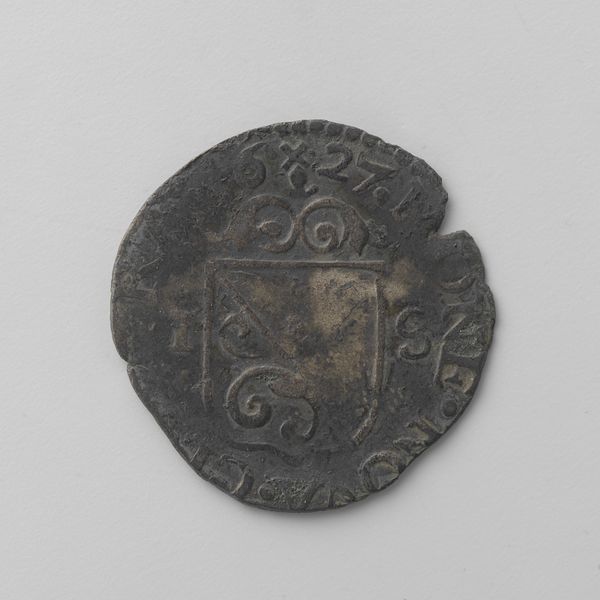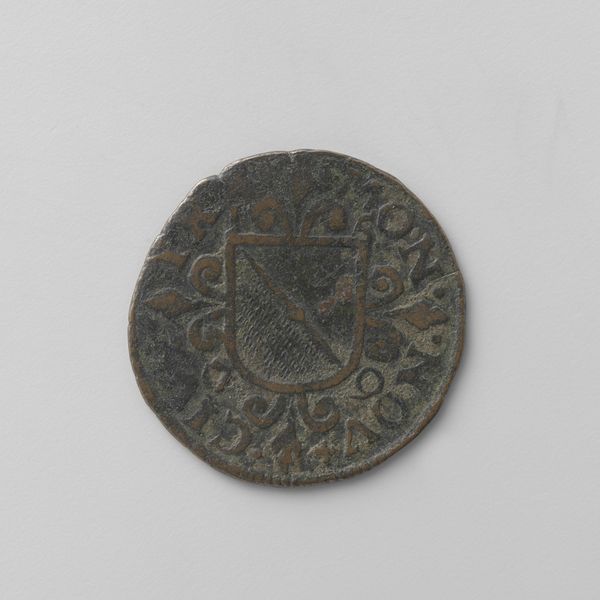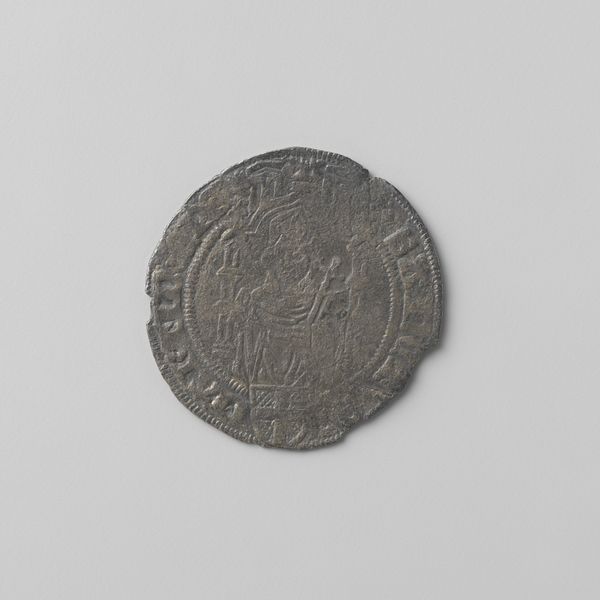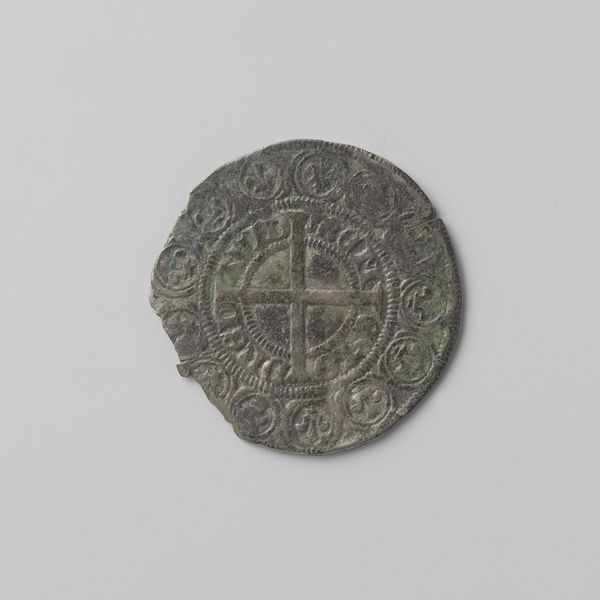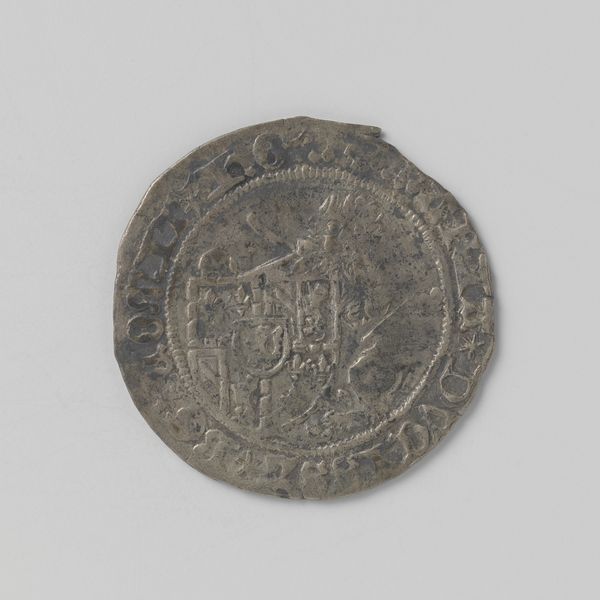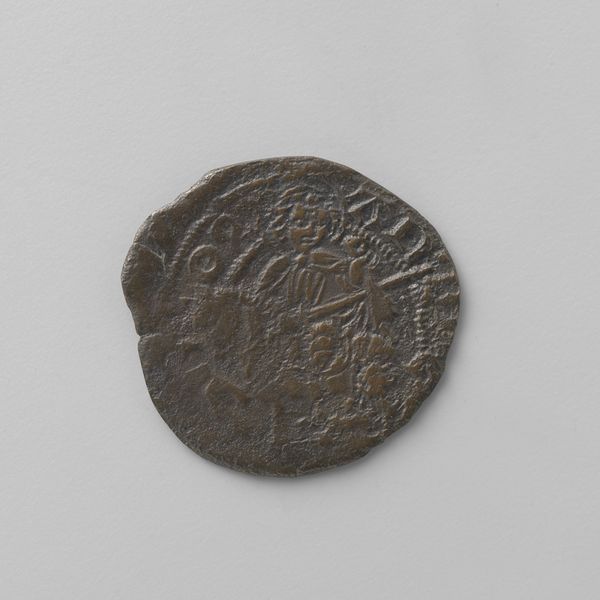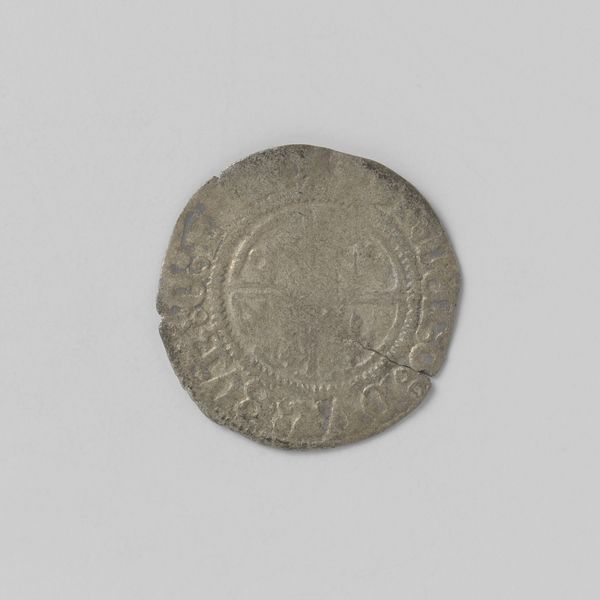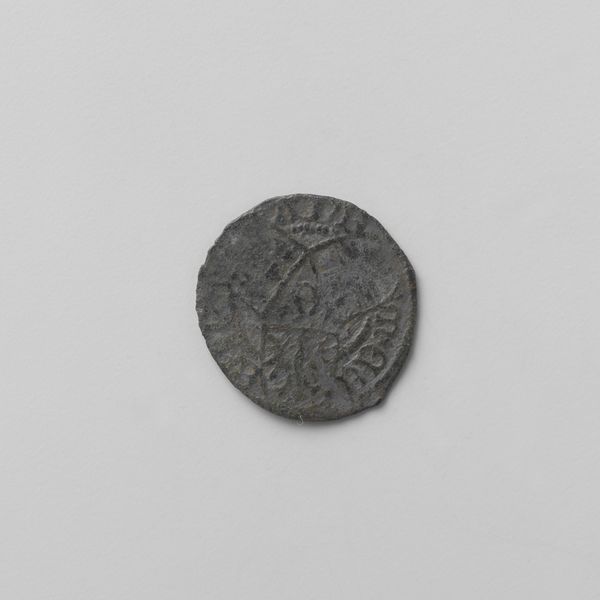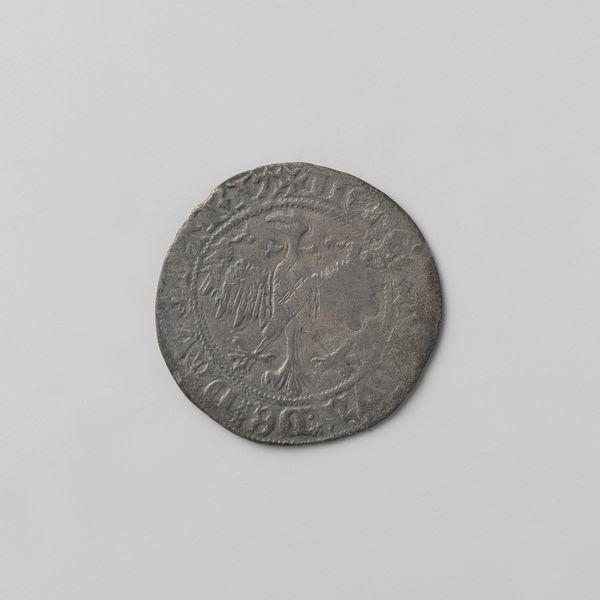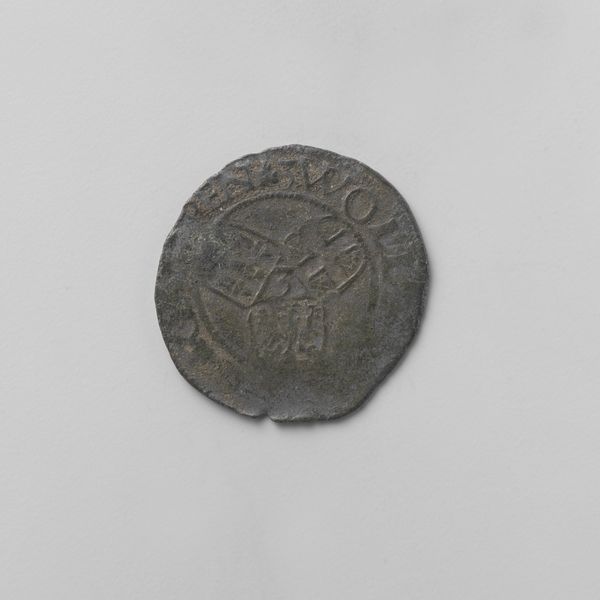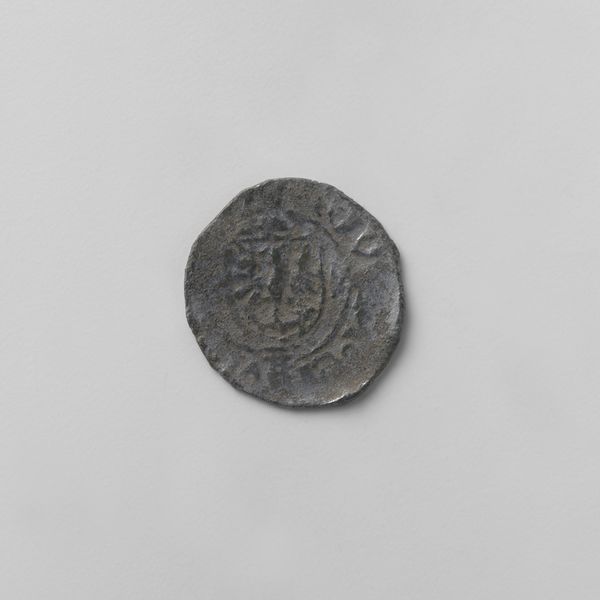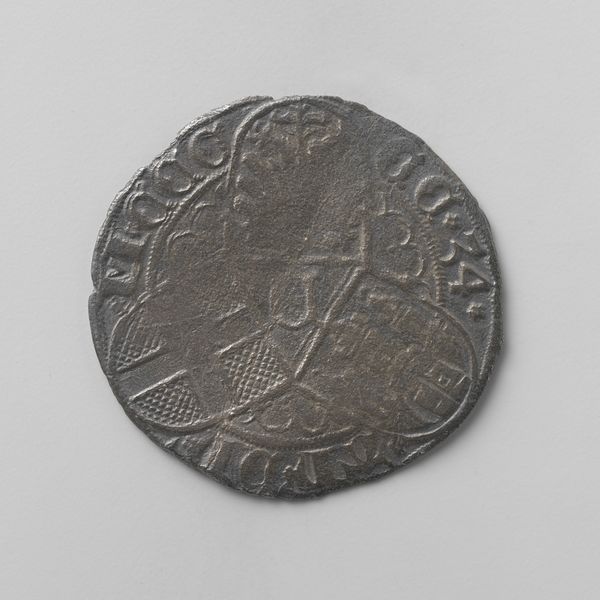
Gelderse Hollandse penning van keizer Karel V, 1515-1555 1544 - 1552
0:00
0:00
metal, sculpture
#
portrait
#
medieval
#
metal
#
sculpture
#
sculpture
#
carved
#
statue
Dimensions: diameter 1.6 cm, weight 0.43 gr
Copyright: Rijks Museum: Open Domain
Curator: Standing before us is a "Gelderse Hollandse Penning" featuring Karel V, dating back to between 1544 and 1552. Editor: The coin has a somber presence, doesn't it? I am immediately drawn to the material itself; it looks almost earthy, handled by countless people across centuries. Curator: Indeed. Its materiality speaks volumes about power and trade in the Habsburg empire. But what I see here is a complex intersection of power and identity in 16th-century Netherlands. Karel V, a figure of immense influence, aimed to consolidate his authority, and objects like these served as instruments of visual propaganda. The act of disseminating such emblems amongst a population underscores efforts to manufacture consent and reinforce existing social stratifications. Editor: Yes, and the crafting process itself involved layers of labor from mining the metals, to die-making and striking the coins; and finally to the economic roles the coins were intended for, down to the smallest transaction. This wasn't just an image; it was the physical manifestation of empire embedded within material practices of consumption and exchange. You can practically trace trade routes through the coin. Curator: Precisely. It's not simply a representation, but a material object woven into a complex network of political and economic maneuvers of early global capitalism. Consider, also, the inherent gendered dynamics present, from artistic representation to distribution networks - even something as commonplace-seeming as coinage carries layered gender dimensions within social constructs and cultural assumptions of the time. Editor: Look closer— the way it is carved suggests that they are handmade or finished, no mass production. There are signs of degradation that show heavy use by people, which only makes it all the more beautiful and important. Curator: And that "beauty," as you mention, isn't merely aesthetic; it's tethered to a very real, historically embedded sense of meaning. I find it fascinating how we perceive its inherent imperfections in an era increasingly obsessed with digital perfection. Editor: I am drawn to the touch of a worker and how the human effort shapes a portrait; one can trace this craft tradition as an artistic output in its own right. I hadn't quite considered its implications from an intersectional lens. Thank you. Curator: And thank you. It's in these layers of meaning, accessible through attention to materiality and context, that we arrive at deeper understandings of history.
Comments
No comments
Be the first to comment and join the conversation on the ultimate creative platform.
